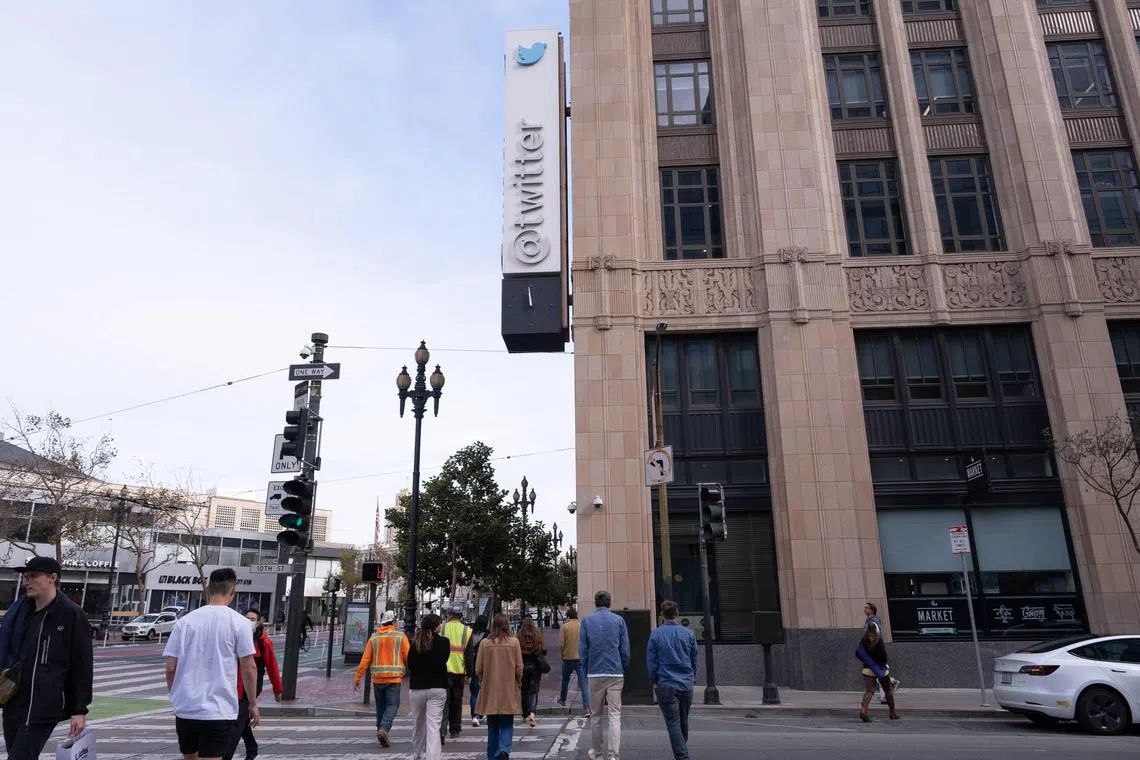Tech layoffs send temporary visa holders in US scrambling for new jobs
Sign up now: Get ST's newsletters delivered to your inbox

The tech industry has long relied on the H-1B visa programme to meet its need for workers in specialised fields.
PHOTO: AFP
Follow topic:
San Francisco – Mass tech layoffs have left hundreds of workers living in the United States on temporary visas with little time to find another job – and at risk of having to leave the country.
Many say they are getting inadequate guidance from the companies that sponsored them.
The technology industry has long relied on the H-1B visa programme to meet its need for workers in specialised fields such as computer science and engineering. Amazon, Lyft, Meta, Salesforce, Stripe and Twitter have sponsored at least 45,000 H-1B workers in the past three years, according to a Bloomberg analysis of data from the US Citizenship and Immigration Services.
Reports compiled by employees at Meta and Twitter indicate that the latest round of job cuts at those two companies
Many people with H-1B visas have been living in the US for years, awaiting permanent citizenship. Now they are frantically searching for jobs along with thousands of other tech workers in a newly competitive labour market. Some have mortgages, student loans and children in school.
At the same time, many major employers have frozen hiring, and recruiting is typically slower during the holidays.
With deadlines looming, desperate job hunters have turned to their professional networks to find a way to stay. Some have made direct appeals on LinkedIn, generating threads with hundreds of responses, including many citing job openings in the US and overseas. Crowdsourced spreadsheets and referrals abound on social networks.
More than a dozen recently cut workers spoke to Bloomberg; they requested anonymity to avoid angering their former employers or jeopardising their job hunt. One former Twitter designer, a 30-year-old who has been in the US for 14 years and was let go in November along with 3,500 colleagues, said she had long imagined this scenario, living in dread of having to pack up everything and leave the country on the fly.
The H-1B programme allows US employers to recruit foreign workers with college degrees in technical fields where there has historically been a shortage of Americans. Visas are issued for three years, with possible extensions. The number of people allowed in each year is capped at 85,000, and demand is high, particularly among Indian professionals.
In the third quarter, the median salary for an H-1B worker was US$106,000 (S$146,000), according to data from the US Department of Labour. But workers at top tech companies make much more.
The median salary for an H-1B worker at Meta, Salesforce and Twitter was about US$175,000 (S$241,000), not including hefty bonuses and stock options.
The layoffs have had an especially big impact on Indians, who tend to be on temporary visas longer than other foreign groups because of backlogs in getting permanent residency, or a green card.
Each country is typically allowed a maximum of 7 per cent of the employment-based green cards issued each year, so while there are almost half a million Indian nationals in the queue, only about 10,000 green cards a year are available for them.
A congressional report estimated that Indians filing in 2020 would have to wait as long as 195 years for a green card. Chinese workers faced an 18-year wait; for people from the rest of the world, it is less than a year.
At the start of the year, one H-1B holder from India had just bought a house in Seattle to start a job with Meta. Eleven months later, he is searching for a company to hire him and sponsor his visa transfer.
The father of two, who has a master’s and has lived in the US for 15 years, said he is hoping to find a job as a technical product or programme manager.
“It is hard to tell yourself that even after 15 years being properly documented, you still might not have a way to stay. The path to residency is broken,” he said.
Companies, which must pay for H-1B workers to return to their home countries if they have to leave the US after losing their jobs, have offered varying levels of support for immigrants.
Five former Twitter employees on temporary visas said the company has provided little assistance and was not clear when their 60-day grace period starts. When one worker asked for clarification, a company representative recommended that they find their own attorneys, because the law could be interpreted in different ways. Twitter did not respond to a request for comment.
Meta chief executive Mark Zuckerberg, who announced 11,000 job cuts this month, told employees that visa holders would be given “notice periods” – which can buy them more time before their visa clock starts ticking – and assistance from “dedicated immigration specialists”. But one former Meta employee said the consultation was not helpful. The attorney had offered similar advice to Twitter’s: “Find your own lawyer.” Others said they appreciated the support.
Some have already given up hope. A 34-year-old product manager laid off by a large fintech firm said he is half-heartedly trying to find a job in the next few weeks, but has largely made up his mind to move back to India.
A University of Chicago graduate, he has been living in the US for seven years. Going back to his home town of Bengaluru may be a “blessing in disguise”, he said – he will be able to spend more time with his ageing parents and start his own company, which is hard to do while on a visa. “I am burned out,” he said about the green card backlog. “I don’t see a light at the end of this tunnel.” Bloomberg

